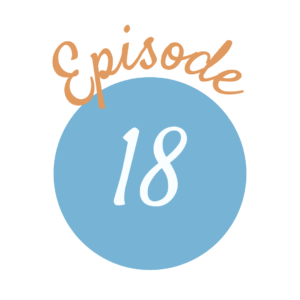
The scope of the subject of geography matches the size of the world it covers and Charlotte Mason’s approach to this subject is likewise vast and multifaceted. This podcast episode discusses the purpose of geography study, the variety of resources used for learning, and gives a broad overview of the progression throughout forms I to VI.
Listen Now:
“Geography is, to my mind, a subject of high educational value; though not because it affords the means of scientific training. Geography does present its problems, and these of the most interesting, and does afford materials for classification; but it is physical geography only which falls within the definition of a science, and even that is rather a compendium of the results of several sciences than a science itself. But the peculiar value of geography lies in its fitness to nourish the mind with ideas, and to furnish the imagination with pictures. Herein lies the educational value of geography.” (1/271-72)
“[G]ive him…intimate knowledge, with the fullest details, of any country or region of the world, any county or district of his own country. It is not necessary that he should learn at this stage what is called the ‘geography’ of the countries of Europe, the continents of the world–mere strings of names for the most part: he may learn these, but it is tolerably certain that he will not remember them. But let him be at home in any single region; let him see, with the mind’s eye, the people at their work and at their play, the flowers and fruits in their seasons, the beasts each in its habitat; and let him see all sympathetically, that is let him follow the adventures of a traveler; and he knows more, is better furnished with ideas, than if he had learnt all the names on all the maps.” (1/274-75)
Ambleside Geography Book I, Charlotte Mason (in print here)
Ambleside Geography Book 2, Charlotte Mason
Ambleside Geography Book 3, Charlotte Mason
Ambleside Geography Book 4, Charlotte Mason
Ambleside Geography Book 5, Charlotte Mason
Our Country and Its People, Monroe & Buckbee (online here)
Geikie’s Physical Geography (online here)
(Contains Affiliate Links)
Charlotte Mason Soiree Conference
Episode 146: Physical Geography
The Uses of Books in Geography, C.N. Heath (Parents’ Review 14, no. 12, pp. 930-36)




Thank you for this ladies! I bought the Form 1 Template earlier this year and was wondering if I need to wait for any changes to be made to the Geography content. From what I can tell your google doc overview has more details now than the template. If the template won’t be updated then I’m fine doing the legwork myself, I just have in my head that the template might be updated down the road. Thanks for your time! I have eagerly been awaiting this episode and it did not disappoint!
Heather,
The only thing that would need to be updated in our template is the new links to the Geography episodes, which it sounds like you’ve already listened to. All the basic guidelines for what to cover is still the same, and we wouldn’t be more specific in the template anyways. The Geography overview includes the specific choices, so would be redundant anyways.
Perfect. Thank you!
I would love to read the complete PR articles you mention. Could you please link them? (is it possible?)
I’m sorry, Fannie. Only the one I linked above is available online 🙁
Thank you Emily!
For form 1a we have the following books: “They Live in South America” by Dalgliesh, “The First Book of Mexico” by Epstein, “The First Book of Eskimos” by Brewster, and “The First Book of the Arctic.” Would those books be a suitable substitute for the Charlotte Mason geography book 2, at least for the section on North and South America? I have no idea what books to get about the rest of the continents.
Second question: Does it work to combine a first grader and third grader for geography? Is it okay for the first grader to jump in where the third grader is in the Charlotte Mason geography book 1, or is it important to start that book at the beginning?
Hi Ashley,
Have you taken a look at CM’s second book? I think you could piece together readings from those resources, but they are all more in depth in each of those areas than CM used. I am continuing to look for a good substitute, but for now, I’d recommend using what you have, in part, to expose your children to the basic information about those areas. Do take a look at the content CM used for this level to get an idea of what kind of material you would want to include in this first pass at the continents of the world.
As for your second question, I will stick to what CM did: She always assigned the beginning portion of the book to the first year students (even if they would then jump to the third section for their second year), while the Form IA students continued on with the rest of the book in a 6-term (2 year) cycle. However, there was always the note at the end of every programme that for the home school room where there were students in both IB and IA, you could choose to do the work of either IB or IA as you see fit. You’ll have to gauge your situation with your family and each individual kid to determine which course of action is best for you all.
Emily